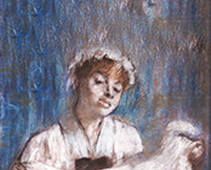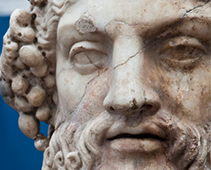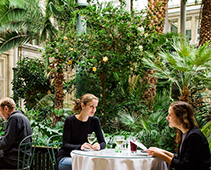The Glyptotek’s collection is of a very high standard, with works by such artists as Juel, Eckersberg, Købke, and Lundbye.
DANISH PAINTING
THE GOLDEN AGE
The period 1800-1860 has been called the “Danish Golden Age”, because it is the incarnation of a flourishing period in Danish art history. The Glyptotek’s collection is of a very high standard, with works by such artists as Juel, Eckersberg, Købke, and Lundbye.
The collection represents a unique epoch in Danish figurative art, the initial foundation of which was the great interest in the art and culture of the ancient world which pervaded all of Europe at that time. First Italy, and later Greece, were the countries one should visit to draw inspiration. As professor at the Royal Danish Academy of Fine Arts in Copenhagen, C.W. Eckersberg was a significant figure in painting. From around 1840, art in Denmark changed both in role and character, when ideas of national romanticism found dynamic expression in landscape painting with the Danish country, people and history at centre stage.
The Glyptotek’s collection of Golden Age painting was re-hung in 2011 and a time-line in the exhibition area puts the main events and artistic development in the years 1800-1860 into a European perspective.




